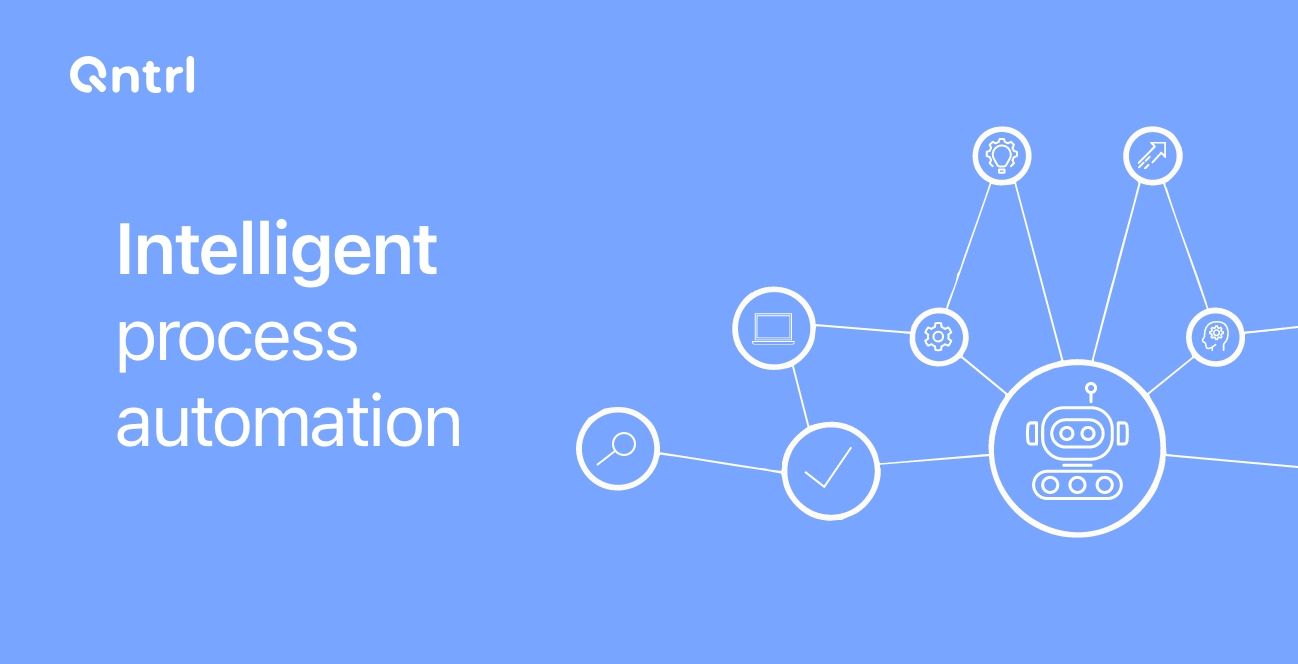Business process analysis model: Techniques and benefits with real-world applications

Business process analysis (BPA) involves an evaluation of company workflows aimed at identifying areas of inefficiency. Once inefficiencies have been identified, tasks are streamlined and automation solutions are established to enhance business performance. But what happens if you put BPA in the mix with automation? "Transformed" is the word you're looking for.
This primer will cover the basics of BPA, discuss its key methods, and underscore how strong BPA can be for organizations operating within almost any industry.
We'll then study in detail how a process automation platform like Qntrl changes the way business process analysis is executed. With an example from Movyon, we'll look at the practical difference it makes when combining BPA and process automation.
What is business process analysis?
Business process analysis is a structured analysis of organizational processes with the intent to make improvements. It maps out processes, evaluates them, and optimizes workflows to increase their efficiency, eliminate redundancy, and ensure proper alignment of the processes with business goals.
BPA helps companies be more agile and focus their attention on the main operational activities that bring the most value to customers.
The most critical focus for BPA is giving businesses insight into how work flows through business processes and identifying areas where inefficiencies, bottlenecks, and roadblocks reduce productivity.
This way, businesses can redesign their processes to eliminate waste, enhance communication, and reduce operational costs. In the current economic climate, BPA is an excellent means of staying ahead of the competition while also improving your bottom line.
The role of process automation in BPA
BPA attempts to analyze and improve processes, but it really adds value when combined with process automation. Process automation uses technology to automate routine, repetitive tasks with the end call of requiring fewer interventions by humans. When BPA is combined with automation, organizations are more efficient, make fewer errors, and deliver results in less time.
Benefits of process automation include:
Speed: Automated processes operate at a faster rate than their manual counterparts, providing more output.
Accuracy: Accuracy is enhanced because human input is reduced, and with the chances of error being low, accuracy and consistency are improved.
Scaling: Automation allows a firm to scale operations without necessarily requiring additional resources.
Cost efficiency: The necessity for labor is reduced because of automation, leading to waste reduction.
BPA identifies inefficiency, and the removal of these inefficiencies through process automation does it more expeditiously, correctly, and efficiently.
Business process analysis techniques
BPA techniques vary from simple visual mapping tools, such as flowcharts, to elaborate problem-solving techniques. Some key techniques include:
Flowcharting
Flowcharting is one of the most simple and effective methods used in BPA. It represents, in a visual diagram, the series of steps in a process. Each step, connected by an arrow, describes the jobs and decisions that have to be followed for an activity. Flowcharts help businesses outline their workflow and understand a sequence of activities when inefficiencies or bottlenecks are identified.
Flowcharts are not only helpful in analyzing cumbersome processes but also include decision-making nodes and stakeholders. When you put a process on a flowchart, you can easily identify delays and redundancies and implement corrective actions.
Root cause analysis
Root cause analysis, or RCA, is a way of finding the root causes of problems in a process rather than addressing symptoms. In BPA, this allows businesses to explain why certain inefficiencies or problems exist, helping them devise better solutions.
The steps of RCA typically include:
Define the problem: Clearly identify the problem to be solved.
Collect data: Gather the data that may lead to the identification of the root cause of the problem.
Analyze the data: Look for patterns or trends that may explain the root causes of the problem.
Identify the root cause: Use all the information collected to determine the root cause of the problem.
Develop solutions: Formulate actionable solutions for the root cause. The ultimate result of the RCA process is the long-term enhancement of business processes.
Value stream mapping
VSM (value stream mapping) is an analytical technique that observes the flow of material, information, and tasks across a process. VSM finds waste and inefficiencies by mapping out every step that goes into providing a product or service. VSM helps companies identify non-value-adding steps and areas where time, energy, and resources are being wasted.
A VSM contains:
Current state mapping: Recording the current flow of materials, information, and tasks
Future state mapping: Imagining what the process might become after improvement
Action plan: A roadmap for implementing changes that would eliminate waste and improve efficiency
This technique is particularly useful in lean manufacturing and supply chain management.
Benchmarking
Benchmarking is a comparison of the processes within an organization to the best available in the industry or by leaders in that industry. This technique helps businesses realize what they lack and what opportunities lie ahead for improvement.
By studying how similar challenges are met in other organizations, businesses can implement new strategies or tools that enhance their processes.
Benchmarking enables organizations to be aware of trends, performance measurements, and customer expectations in the industry. This knowledge allows businesses to close performance gaps and align their processes to match the industry standard.
Process mapping
A process map is a detailed diagram that shows every step of a specific process. Multiple levels of detail are often used in a process map, including both high-level summaries and highly detailed step-by-step breakdowns of each individual task.
With this technique, businesses can better understand how work flows within their organization and identify inefficiencies or redundancies.
The documentation of processes also helps firms visualize the whole process, identify steps that aren't necessary, and then streamline the process. The most advantageous use of process mapping is in the implementation of process improvements or automation.
SWOT analysis
SWOT analysis is a strategic planning tool for analyzing an organization's strengths, weaknesses, opportunities, and threats. Applying BPA can help businesses assess their processes by identifying internal strengths and weaknesses, as well as external opportunities and threats.
A SWOT analysis provides:
Strengths: What areas of the process are working well and facilitating success?
Weaknesses: Where are the bottlenecks or inefficiencies in the process?
Opportunities: Where can the business improve or leverage new technology and trends?
Threats: What external factors could disrupt the process or prevent improvement?
SWOT analysis helps organizations clearly understand their processes and where they need to focus their efforts.
Benefits of BPA
BPA can be beneficial for businesses in almost any industry. Here are just a few of its major advantages:
Efficiency improvement
BPA allows organizations to maximize their workflows, remove redundant processes, and streamline procedures. It identifies bottlenecks and inefficiencies that reduce a business's time spent on non-value-adding activities and ensures everything counts toward adding maximum value to the organization.
Better communication and coordination
Employees can clearly understand what each member in the department is supposed to accomplish and align themselves with these activities. This minimizes misunderstandings among team members and ensures smooth coordination because everyone is on the same wavelength. BPA also enhances internal communication and discourages frequent meetings via email or phone calls.
Higher accountability
BPA brings transparency to business processes, so accountability is clear at every stage of completion. The higher the transparency, the better the accountability for completing tasks within time and to the desired level of performance. This ensures that the current situations of unchecked authority and ownership do not prevail.
Work output can be easily linked to the overall task and therefore owned by the relevant employee, contributing to a more results-oriented effort.
Enhanced resource utilization
BPA helps identify the actual use of resources—labor, money, and technology—by processes in an organization. It identifies both overuse and underuse to help organizations optimize their resource allocation, attaining better productivity and reducing waste.
Continuous improvement
BPA encourages continuous improvement. With regular reviews of process flows, inefficiencies are discovered and solutions are implemented. This helps keep business workflows agile and responsive to both changing market conditions and shifting customer demands.
How Qntrl can help with BPA and process automation
While business process analysis helps identify inefficiencies and bottlenecks, a BPM platform like Qntrl makes them easier to automate and optimize. Qntrl combines BPA with process automation, allowing companies to process workflows more efficiently and ultimately achieve better results.
Businesses can use Qntrl to:
Create flowcharts and maps for visualizing and automating their processes with approvals, notifications, and more for mapping and automating business processes.
End departmental silos and ensure a non-disruptive flow of communication among departments, enabling teams to collaborate more effectively.
Get real-time visibility into what's happening in tasks, identify bottlenecks, and provide insights through dashboards and analytics.
Example: Movyon case study
Movyon, a leader in the provision of IT-driven services for urban mobility and infrastructure, saw a massive increase in process efficiency after implementing Qntrl. Previously, they experienced challenges with business processes, like request management, approvals, and reporting, that were highly time-consuming, subject to human error, and inconsistent.
However, by integrating Qntrl with its automation system, Movyon managed to reduce process times by 40%, automate approvals, and free up employee time for more value-added tasks. More importantly, their ability to visualize workflows across teams helped boost team collaboration, which ultimately led to better decisions and higher productivity levels.
Conclusion
The integration of business process analysis with process automation is powerful. While BPA provides the necessary structure to identify inefficiencies and improve workflows, automation provides the tools to put improvements into practice faster and more accurately. By leveraging platforms like Qntrl, businesses can enhance their BPA efforts, automate tedious processes, improve collaboration, and increase operational efficiency.
Enjoying your reading?
Enjoy organization and visibility too!
Qntrl can help you organise, control and improve production and projects in your team.







